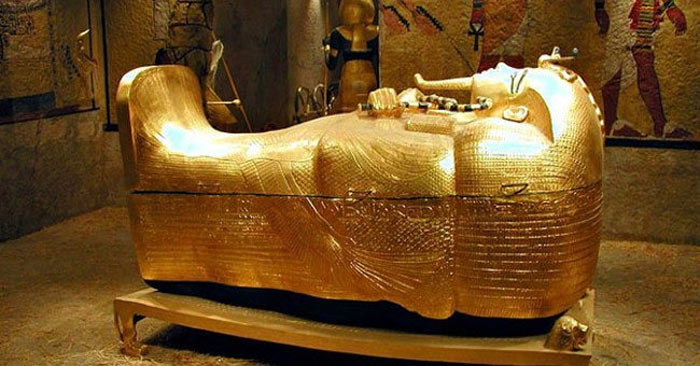Explore the world's most mysterious lake Vostok
Relic lake
In the early 1960s, Soviet physicist IA Zotikov proposed a theory according to which the ice shell under the stations "Mirny" and "Vostok" in Antarctica acts like a thermos. Lake Vostok is located in the Vostok station area under an ice layer about 4000 m thick, with dimensions of about 250×50 km and a maximum depth of 750-1,200m; Estimated area is 15.5 thousand km2, water volume is about 5400 km³.
In its area, 11 ice islands with a total area of 365 square kilometers have been identified. The largest area among them is 175 square kilometers. In the eastern regions, 56 isolated subglacial reservoirs have been identified; The largest of them has an area of 129 square kilometers.

Russia's Vostok station in Antarctica. Photo: russian7.ru
Lake Vostok is unique mainly because it was isolated from the Earth's biosphere for millions of years. The 4 km long ice shell above it serves as a natural insulator for the lake. The freshwater in the lake has an oxygen content about 50 times higher than regular freshwater. The temperature at the water-ice boundary is -3.2°C. The water pressure in the lake, according to calculations, is more than 300 atmospheres, but microorganisms that can adapt to such conditions can have unique properties.
Scientists express the opinion that between the surface of the planet and the continental ice caps there must be water in the form of lakes where life can exist. In 1964, while conducting seismic research, AP Kapitsa suddenly discovered that equipment under Vostok station had two signal reflection peaks at depths of 3,730 and 4,130 m, proving that there was a giant ice lake between the two points. . The water temperature in this lake remained between 2 and 5°C at a time when the continental surface temperature dropped to -80°C.
Scientists announced that there is a dome above the lake, several hundred meters high and filled with warm air. The discovery of an unusual lake has given rise to many of the most astonishing conjectures: from the assumption that animals unknown to science can live in the lake, to the hypothesis that there is a passage at the bottom of the lake. to a certain underworld, described by authors of the ancient world.
The mystery of the ice vacuum cleaner
The first well, 40 m deep, was drilled by VS Ignatov with a thermal drill in 1959. By studying ice layers, experts want to determine how the climatic evolution of our planet took place during The past 400,000 years. A year later, using a thermal drill IA Zotikov drilled to a depth of 50 m. However, due to extremely low temperatures on the continent's surface, he was unable to improve drilling results.
Only after the production of a special drilling machine at the Leningrad Mining Institute did things progress. The operating principle of a drill is similar to that of a vacuum cleaner. A heating element in the shape of a ring is lowered into the thawing well, while melt water is drawn to the surface through a pipe attached to the heating ring using a vacuum pump.
In this way, in 1972, the drilling depth could reach 952 m. Gradually, drilling methods were improved and new records appeared: 1985-2,202 m, 1989-2,546 m, 1993-2,755 m, 1998-3,623 m. Russia became the first to drill so deep, no more than 120-130 m into the waters of the most mysterious lake on the planet.
In 2006-2007, the Russian Antarctic Expedition No. 52 continued to drill the ice layer that separates the modern world and the lake's ancient fauna. But at a depth of 3,665 m, 85 m above the lake surface, the thermal drill suddenly broke. People can only resume work in January 2012; re-entry into Lake Vostok took place in 2015.
In September 2012, the head of the cryobiology group at the Eukaryotic Genetics Laboratory said that four species of bacteria were found to cause pollution. Lakes may contain chemoautotrophic bacteria that derive energy from redox reactions instead of organic substances. Scientists will for the first time begin studying bacteria that can survive in the most extreme conditions, including in the subglacial oceans of Europe and Enceladus.
In July 2013, the results of research on ice samples from wells using the metagenomics method were published. 3507 unique DNA sequences could be isolated, of which 1623 taxonomically aligned sequences (with genus or species) were established. About 94% of the sequences belonged to bacteria, 6% to eukaryotes (mostly fungi), and only 2 to archaea. Since some bacteria were found to be parasites in fish, researchers speculate that fish may live in the lake.
Parallel world
What did scientists discover in water samples taken from a lake separated from the planet's ecosystem for more than 400,000 years by a many-kilometer-long shell of ice and snow? Neither mysterious monsters nor deadly bacteria enter our world through boreholes. But the existence of life in Lake Vostok is proven. Its inhabitants are thermophilic bacteria contained in ice cores at a depth of 3,551-3,607 m.
The most interesting thing is that these bacteria only grow and live in environments with temperatures of +40-60°C. So, if there are places in the lake with such warm water, then its waters can harbor the most amazing creatures, even prehistoric ones.
The second amazing discovery made by scientists concerns a magnetic anomaly near one of the lake shores: the magnetic needle here does not show a North-South direction, but is constantly rotating. The same phenomenon occurs in areas with large amounts of iron or where strong electromagnetic installations are present. Currently, scientists are eagerly waiting for the third intrusion into Lake Vostok, which will reach the bottom of the lake.
The data obtained can become a real sensation: if people find living organisms that have survived in the waters of an underground lake, isolated from the surface of the planet for several hundred thousand years. And it is not excluded that the inhabitants of the lake will have a reasonable and wonderful appearance.
The discovery of Lake Vostok was one of the largest geographical discoveries of the second half of the 20th century. To date, about a hundred similar lakes have been discovered under the Antarctic ice. Experience studying lakes could be useful in studying Jupiter's moons Europa and Callisto, as well as Saturn's moon Enceladus. This could be one of the most promising projects in the search extraterrestrial life.
You should read it
- Lake in the sea of Mexico - where there is absolutely no life
- Ancient salt lake suddenly turned pink full of mystery in China
- Mysterious lake 'death' in Africa robbed more than 1700 lives in one night
- Lake caused by meteorite fell from 52,000 years ago disturbing the compass
- CES 2020: Intel unveils Tiger Lake CPU, promising 'badass' graphics processing performance
- 6 ideal natural tourist lakes in Florida
- Divers discover a 3,000-year-old underwater castle in Turkish lake
- The largest hot water lake in the world, boils all year round and fumes
- Intel Alder Lake CPU conflicts with DRM software, making users unable to play games
- Microsoft lists supported CPUs from the Meteor Lake 'Core Ultra' series and next-generation Raptor Lake
- The 11th generation Intel Core H-series (Tiger Lake-H) mobile processors have just arrived
- Mysterious 9m long log floating vertically for 120 years on the lake
May be interested

4,000 year old sales complaint letter

Discovered an 80-year-old shipwreck at the bottom of the lake

Operation Muskox: America was preparing to fight the Soviet Union in the Arctic

'Rebirth of the vampire': The mystery of the brick-mouthed remains of the 16th century

Decode dozens of unique tattoos on 3,000-year-old Egyptian mummies

Close-up of the 3,300-year-old golden coffin of pharaoh Tutankhamun






 Lake in the sea of Mexico - where there is absolutely no life
Lake in the sea of Mexico - where there is absolutely no life Mysterious lake 'death' in Africa robbed more than 1700 lives in one night
Mysterious lake 'death' in Africa robbed more than 1700 lives in one night The mysterious 'ghost ship' was discovered on Lake Superior
The mysterious 'ghost ship' was discovered on Lake Superior Loch Ness lake monster and the most controversial evidence in history
Loch Ness lake monster and the most controversial evidence in history Mysterious 9m long log floating vertically for 120 years on the lake
Mysterious 9m long log floating vertically for 120 years on the lake Compare Kaby Lake and Sky Lake
Compare Kaby Lake and Sky Lake